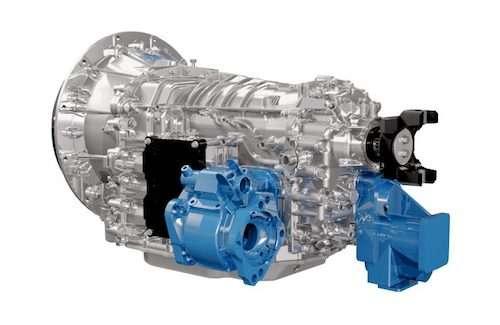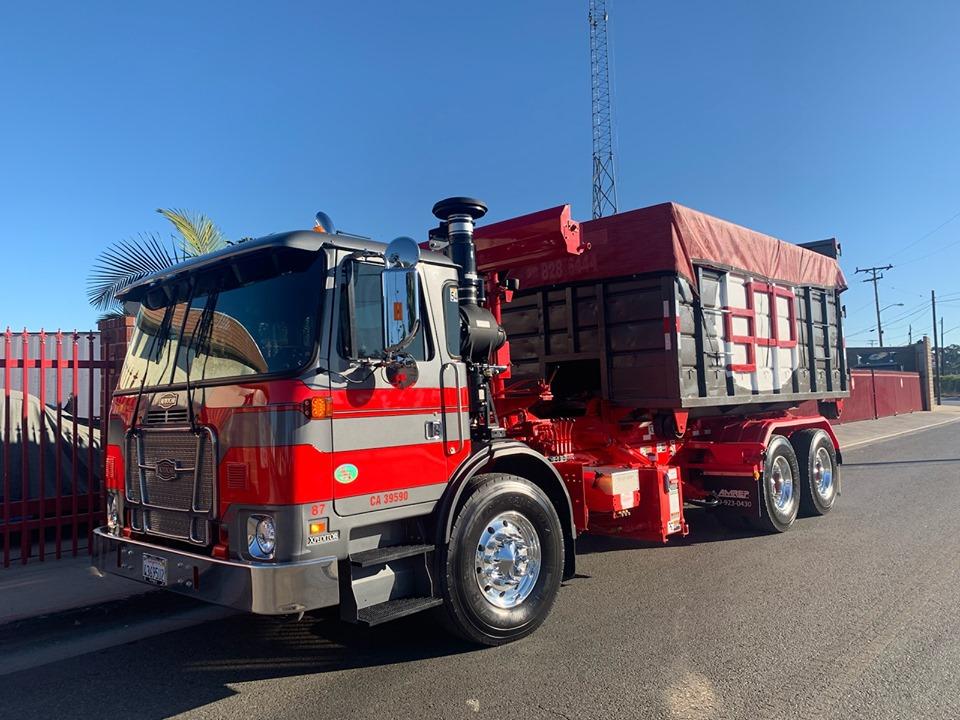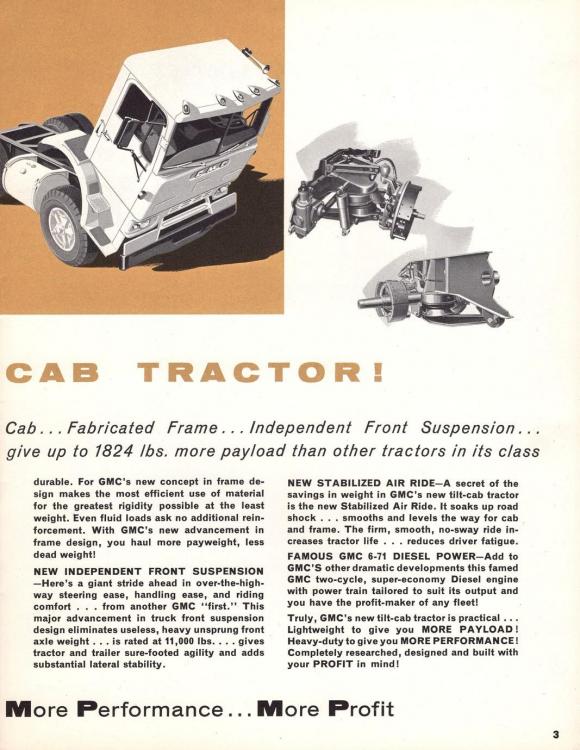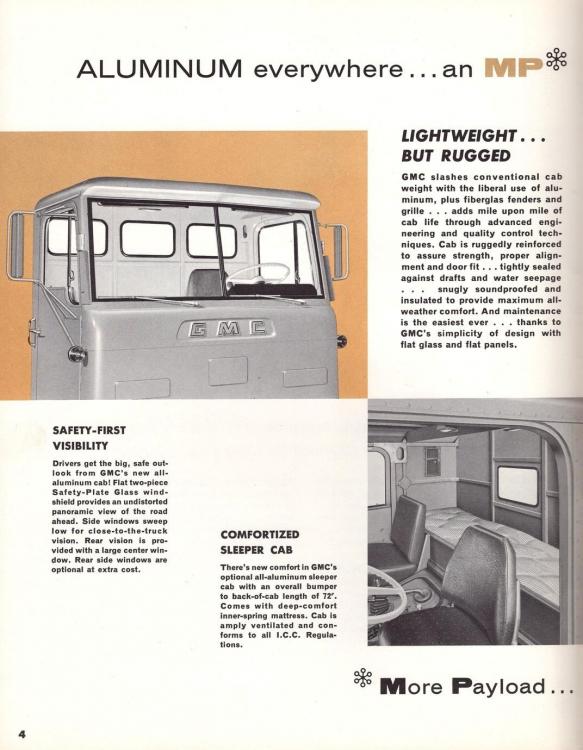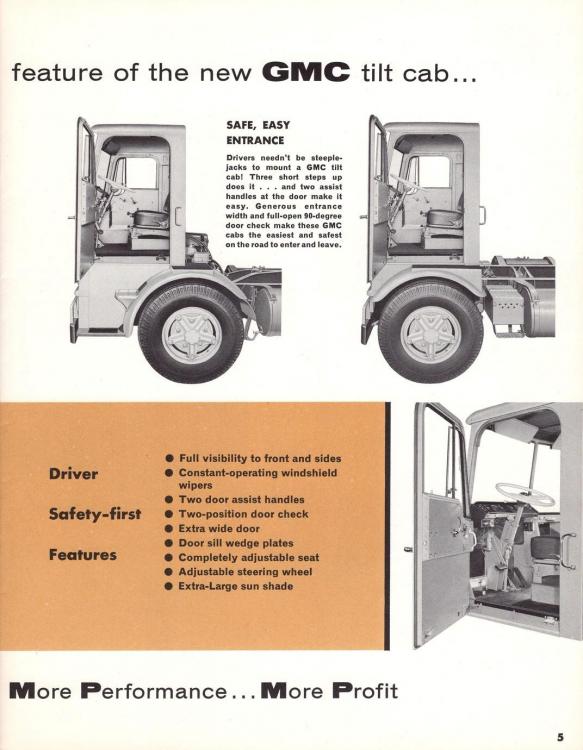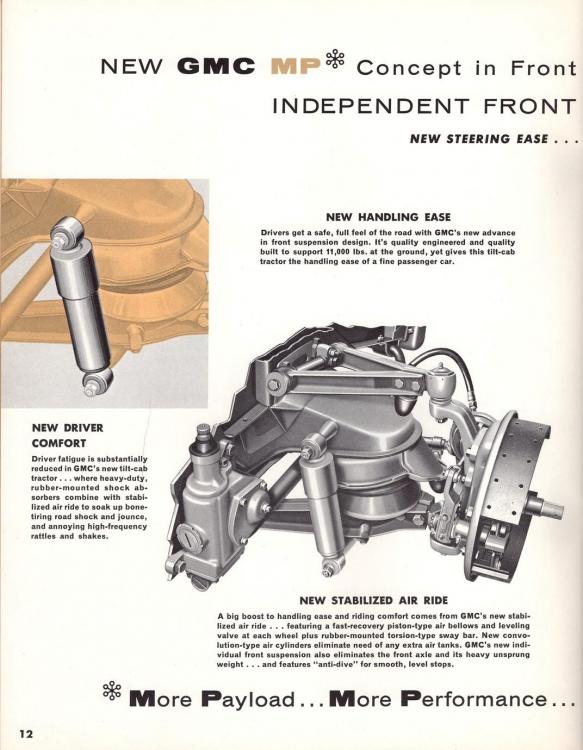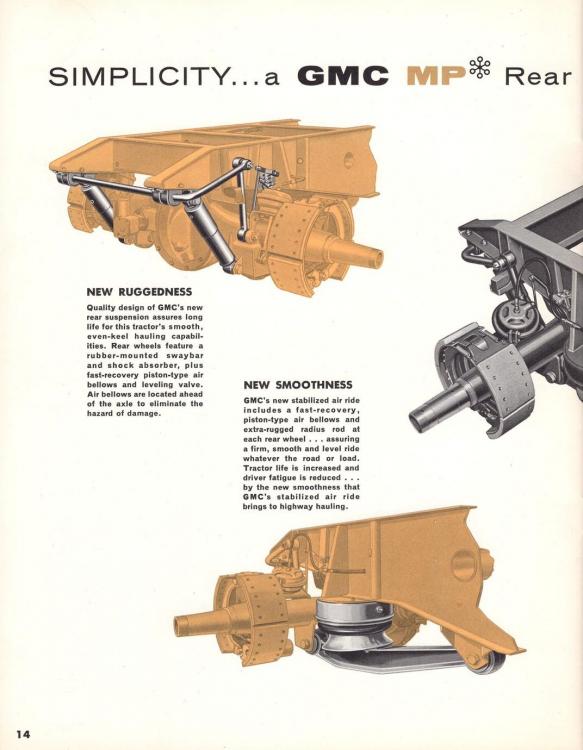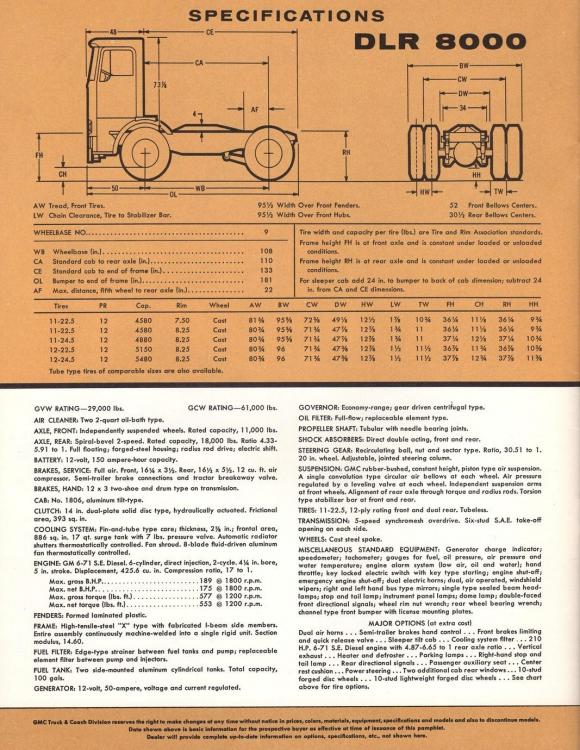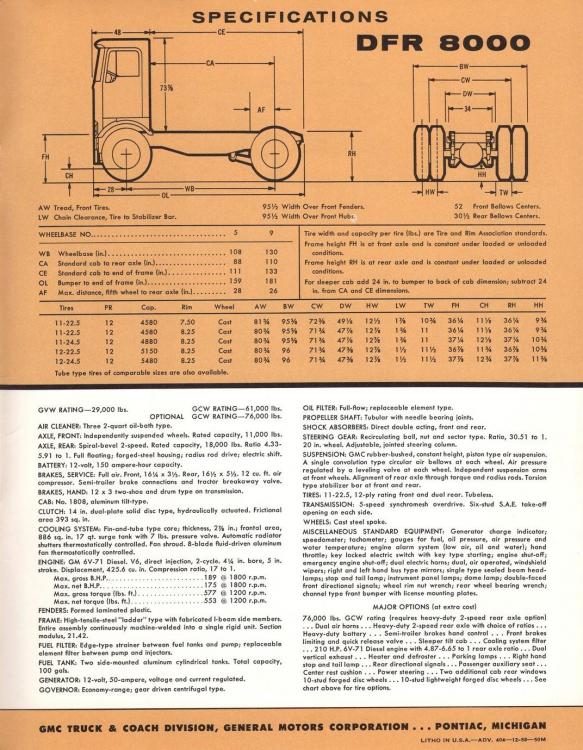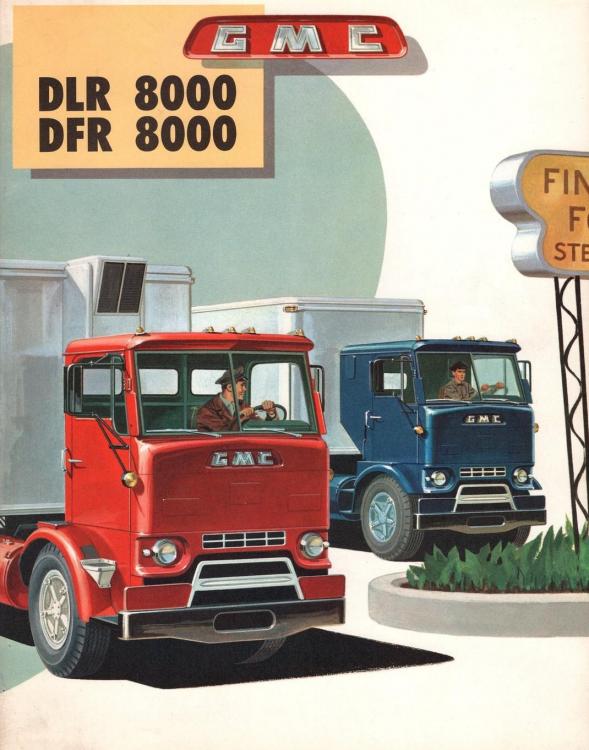
kscarbel2
Moderator-
Posts
18,541 -
Joined
-
Days Won
112
Content Type
Profiles
Forums
Gallery
Events
Blogs
BMT Wiki
Collections
Store
Everything posted by kscarbel2
-
Wall Street Journal / December 11, 2019 U.S. regulators decided to allow Boeing’s 737 MAX jet to keep flying after its first fatal crash last fall even when their own analysis indicated it could become one of the most accident-prone airliners in decades without design changes. An internal Federal Aviation Administration (FAA) internal analysis dated November 2018, released during a House committee hearing Wednesday, projected that without design changes, a 737 Max aircraft could be expected to crash every two to three years, i.e. the FAA predicted there would be more than 15 additional fatal 737 Max crashes over its lifetime. However, FAA regulators, decided to let the plane continue flying.............
-
Roger Gilroy, Transport Topics / December 11, 2019 U.S. Class 8 retail sales in November fell 12.9% year-over-year, landing at the lowest point in almost two years, WardsAuto.com reported. Sales were 18,545 compared with 21,302 a year earlier. It was the lowest volume since February 2018, when sales hit 16,687. Only Paccar’s two brands gained ground last month; all other manufacturers posted declines in sales compared with the 2018 period. For the first 11 months, sales hit 253,266, climbing 12.8% higher than the 224,508 in the 2018 period. Daimler’s Freightliner brand remained the market leader, selling 7,046 trucks, but sales were down 16.4% compared with a year earlier. Freightliner earned a 38% market share. Daimler’s Western Star brand sold 493 trucks, down 3.3% from a year earlier. It had a 2.7% share — giving DTNA a total market share of 40.7%. The two Paccar brands, Kenworth and Peterbilt, combined for sales of 7,014, or about 500 behind DTNA. Kenworth sold 3,508 trucks, a 10.1% improvement over the 2018 period and good enough to earn an 18.9% market share. Peterbilt sold 3,506, up 5.1% from the 2018 period. It also earned an 18.9% market share. [37.8% market share for Paccar] International saw sales drop 42% to 1,273 in the month, which is the beginning of Navistar’s fiscal year. International posted a 6.9% share. Volvo Group’s Mack brand saw sales fall 18.3% compared with a year earlier to 1,185, good for a 6.4% share. Volvo posted sales of 1,528, down 30.5% from a year earlier. It earned an 8.2% share. The November totals also included Class 8 sales by Hino Motors Manufacturing U.S.A. of 2 trucks, giving it 8 sales for the year. Hino is relatively new to the Class 8 market. Ward’s also reported combined sales in Class 4 through Class 7 dropped 7.4% in November to 16,753 compared with 18,101 a year earlier.
-
UAW workers ratify FCA labor deal by broad margin Michael Martinez, Automotive News / December 11, 2019 DETROIT -- Fiat Chrysler's roughly 47,000 hourly UAW workers overwhelmingly ratified a new four-year labor contract, ending the most contentious set of Detroit 3 negotiations in years. Roughly 71 percent of workers voted in favor of the deal, the union said Wednesday. "Every full-time production employee currently at FCA will be at top rate by the end of this four-year agreement," Cindy Estrada, UAW Vice President and Director of the UAW FCA Department, said in a statement. "All temporary workers now have a defined pathway to full time and top pay as well." The FCA contract passed with a much higher margin than similar pacts at General Motors and Ford Motor Co. Roughly 54 percent of GM workers passed the deal following a 40-day strike, while the Ford contract passed with 56 percent of workers voting in favor. “We wouldn’t be the company we are today without the contributions of our UAW-represented workforce, and this contract recognizes and rewards their dedication in helping us achieve that success,” Mark Stewart, COO for FCA North America, said in a statement. The Detroit 3 negotiations took 88 days to complete, longer than the last round in 2015, when talks with all three automakers wrapped up by Thanksgiving. Tense times Tempers flared from the outset. The union, angry over GM's plans to shutter four U.S. assembly plants, picked GM as its target company, calling a national strike 24 hours after the previous contract expired after accusing GM bargainers of failing to respond to their demands until the 11th hour. The strike was marked by strongly worded public accusations from both sides that the other was playing games and failing to respond to proposals in a timely manner. After a tentative agreement was reached, a vocal minority of workers grumbled that the gains were not significant enough to warrant the 40 days spent on picket lines. The union bargained in the midst of a crisis, as federal prosecutors moved ahead with a years-long corruption probe that, over the course of the talks, resulted in new charges and the resignation of former President Gary Jones and former Region 5 Director Vance Pearson. Shortly after UAW negotiations began with FCA, GM filed a lawsuit accusing its crosstown rival of a conspiracy to run up GM's labor costs in a bid to force a merger. Despite the obstacles, the union was able to negotiate deals that preserved some of the nation's best health care benefits; accelerated the path to the top wage and benefits package for newer workers; and created a more defined path for temporary workers to achieve permanent status. Labor cost gap The FCA deal boosts profit-sharing payouts by 13 percent and gives less-experienced hourly workers the same health care coverage as veteran employees. Full-time workers will get a $9,000 bonus check — the same as Ford workers — while temporary employees get $3,500. The agreement calls for FCA to create 7,900 jobs with $9 billion in U.S. manufacturing investments through 2023. The figures include 6,500 jobs announced under a $4.5 billion plan to open a second assembly plant in Detroit and expand other plants in the area. The UAW valued the deal at an extra $29,500 over four years for an average production worker, matching the economic gains in the Ford contract. Like the GM and Ford deals, FCA workers will get 4 percent bonuses this year and in 2021 and 3 percent wage increases in 2020 and 2022. The planned investments include $7.8 billion for assembly plants, $615 million for powertrain plants and $495 million for stamping plants. Among the new commitments are $450 million for the Indiana Transmission Plant II to create up to 1,040 jobs and $160 million for Toledo North Assembly to create up to 100 jobs making plug-in hybrid Jeep Wranglers. Colin Lightbody, a former FCA negotiator who now heads a consulting company, said the FCA contract will close the labor cost gap with its domestic rivals. FCA has had an $8-an-hour edge over GM over the past four years, compared with a $5.35 disadvantage for Chrysler in 2006. "The elements that I thought that they would try to get more in alignment with GM and Ford were their health care, where the in-progression employees had a different plan design than the traditional employees. They brought those in line," Lightbody said. "On the profit-sharing formula, they tweaked it bit to bring it a little closer to what the GM and Ford formula is paying."
-
https://www.chicagobusiness.com/awards/andrew-taitz
-
Wall Street Journal / December 10, 2019 Exceptions under federal firearms law allowed the murderer in the attack at Naval Air Station Pensacola to legally buy a handgun in the U.S. despite his Saudi citizenship. Mohammed Alshamrani was able to buy the 9mm Glock 45 because he had obtained a state hunting license, which is one of the exceptions to a law that normally prohibits people admitted to the U.S. under a nonimmigrant visa from possessing or owning a firearm, the Federal Bureau of Investigation office in Jacksonville, Florida, said Tuesday. State officials in Florida are "now" calling such exceptions “loopholes” that must be closed to help prevent similar incidents in the future. Alshamrani killed three people Friday in the attack at NAS Pensacola before he was shot dead by a local sheriff’s deputy.
-
Reuters / December 10, 2019 The Pentagon announced on Tuesday it was halting operational training of all Saudi Arabian military personnel in the United States until further notice. The decision will have far-reaching impacts on visiting Saudi personnel, including grounding more than 300 Saudi Arabian military aviation students. The Pentagon added the move would also affect infantry personnel and all other Saudi training, other than classroom training. The safety standdown only applies to the 850 visiting students from Saudi Arabia. A defense official said the shooting “suggested that there could be a particular improvement with that(nation’s population.” The U.S. Air Force said its groundings of Saudi aviation students also applied to additional U.S. bases. “We feel it is best to keep the Royal Saudi Air Force students off the flying schedule,” an Air Force spokeswoman said.
-
-
David Cullen, Heavy Duty Trucking (HDT) / December 9, 2019 Celadon Group Inc., operator of one of the nation’s largest truckload carriers and a pioneer of NAFTA cross-border trucking, has voluntarily filed for Chapter 11 bankruptcy, the company announced in the early morning hours of Dec. 9. The Indianapolis-based company is shutting down its business operations effective Dec. 9, except for its Taylor Express unit in Hope Mills, North Carolina, which will continue to operate as Celadon explores “a going concern sale of its operations.” Celadon CEO Paul Svindland told HDT that the company’s plan is “to liquidate all of Celadon except for our Taylor Express subsidiary. Our intent is to ensure drivers deliver their last loads safely and will then be instructed on where to deliver their equipment.” Celadon’s lenders have agreed to provide incremental “debtor-in-possession financing.” Chapter 11 filings typically allow the debtor to continue to operate its business in the ordinary course as the “debtor in possession.” However, the filer loses control over major decisions to the bankruptcy court, such as moving to shut down or expand operations or sell off assets. "Celadon has faced significant costs associated with a multi-year investigation into the actions of former management, including the restatement of financial statements,” Svindland said in a Dec. 9 statement. “When combined with the enormous challenges in the industry, and our significant debt obligations, Celadon was unable to address our significant liquidity constraints through asset sales or other restructuring strategies. “Therefore,” he continued, “ in conjunction with our lenders, we concluded that Celadon had no choice but to cease all operations and proceed with the orderly and safe wind down of our operations through the Chapter 11 process." While Celadon has been experiencing business difficulties for several years and had attempted to restructure without bankruptcy protection, the straw that broke the camel’s back may well have been the federal indictment of two former Celadon top executives in an alleged $60 million fraud scheme, which was unsealed on Dec. 5. Less than eight months before, the Department of Justice announced that Celadon had agreed to pay $42.2 million in restitution for filing materially false and misleading statements to investors and falsifying books, records, and accounts. In early 2017, the company posted a $10 million operating loss in the first quarter of the year and was threatened with delisting its stock on the New York Stock Exchange. Current CEO Paul Svindland was named to his position later that year, as Celadon began divesting itself of some of its businesses, selling off its flatbed operations and its driver training business. Earlier this year, it sold its logistics business and its intermodal business. In late July, Celadon announced that it has refinanced its former revolving credit facility and obtained $165 million in new financing. In the announcement, Celadon said the funding would “provide a platform for the company to engineer a turnaround,” including replacing 2,000 tractors with new units in the next few quarters. At the date of its shutdown, Celadon was operating a fleet of some 3,300 tractors and 10,000 trailers with nearly 4,000 employees. Estimates of the number of drivers in the fleet range to over 3,000. Beyond the immediate impact on shippers awaiting loads and, of course, on the Celadon drivers and other employees who will lose jobs, there’s no hard-and-fast equation to compute the aftermath of a large carrier closing. That being said, Avery Vise, vice president of trucking for freight forecasting and analysis firm FTR, told HDT that, “The truckload freight market is so large and fragmented that the loss of a carrier with even a couple thousand trucks would not have any significant impact on capacity, rates, or the driver supply. “This is especially true at a time, such as today, when capacity utilization is well below average,” he continued. “Certainly, an abrupt shutdown would cause some disruptions for the defunct carrier's customer base, but those challenges generally would be resolved with a week or so, perhaps even within a few days.” On the other hand, Vise allowed that, "One unusual factor that could cause some near-term challenges is the very low capacity in the spot market, which typically would be the principal initial recourse following a major carrier shutdown. Spot truck availability for dry-van freight has been below even last year's low levels through most of 2019."
-
Eaton Introduces Medium-Duty Dual Clutch AMT
kscarbel2 replied to kscarbel2's topic in Trucking News
The foreign aggressor just kicked Eaton's future in medium to the curb. ZF's 8HP is significantly cheaper. Eaton, like Cummins, has lost so much market share that a future is no longer certain. https://www.bigmacktrucks.com/topic/57793-zf-to-offer-beefed-up-light-vehicle-8-speed-transmission-for-medium-trucks/ -
Eaton Introduces Medium-Duty Dual Clutch AMT
kscarbel2 replied to kscarbel2's topic in Trucking News
Related reading: https://www.bigmacktrucks.com/topic/41120-navistar-first-to-market-with-eaton-procision-dual-clutch-amt/?tab=comments#comment-298147 https://www.bigmacktrucks.com/topic/49142-eaton-increases-power-gvw-capacity-on-procision-transmission/?tab=comments#comment-364552 -
Eaton Introduces Medium-Duty Dual Clutch AMT
kscarbel2 replied to kscarbel2's topic in Trucking News
Eaton Discontinues Procision Dual-Clutch Transmission Jim Park, Heavy Duty Trucking (HDT) / December 9, 2019 Eaton is discontinuing its Procision dual-clutch automated medium-duty transmission. An Eaton official said the manufacturer would be discontinuing production of the Procision transmission at the end of the year, saying that customers were notified "a couple of months ago." Eaton refused to provide further details. The Procision, introduced in 2014 and in production since 2015, was the first automated dual-clutch transmission in the North American market. It was a 7-speed configuration with a 0.64:1 double-overdrive final drive ratio and was rated at 660 lb-ft. It featured creep mode, hill helper feature, and had three standard PTO openings. The dual-clutch shifting technology was the key to the Procision transmission. Eaton said when the transmission was launched that the torque path to the drive wheels is not interrupted by gear changes, so drivers wouldn't feel a lag in power when upshifting as they do with a traditional manual transmission or automated manuals. Gear changes are made by swapping the engine torque between clutches with the next gear preselected. Smart features such as Eaton Dynamic Shifting allowed the transmission to automatically switch between economy and performance shift schedules based on mass, grade, and driver demand. Withdrawing the Procision from the medium-duty market leaves Eaton with a line of 5- and 6-speed light- and medium-duty synchronized manual transmissions rated from 11,000 to 66,000 pounds GVW. -
We are honored that Southern California Disposal & Recycling included their new #Autocar #ACX in this awesome gender reveal event. Congrats, Sammy Matosian, it's a boy! #AlwaysUp #SantaMonica #itsallabouttheuptime #SoCalDisposal @socaldisposal Always Up - Autocar Trucks .
-
As numerous people have pointed out..........Saudi nationals learning how to fly in the United States.........didn't work out well the first time.
-
ZF's 12-speed AS Tronic TraXon automated manual transmission (AMT), which MAN calls "TipMatic". https://www.truck.man.eu/de/en/trucks/truck-assistance-systems/man-tipmatic.html https://www.zf.com/products/en/trucks/traxon/traxon.html
-
Saudi killer in U.S. Navy base attack hated Americans Reuters / December 7, 2019 PENSACOLA, Fla. (Reuters) - The Saudi airman training at Naval Air Station Pensacola who killed three people there posted criticism of U.S. wars and quoted slain al Qaeda leader Osama bin Laden on social media hours before the shooting spree. A sheriff’s deputy fatally shot the gunman, ending the second deadly attack at a U.S. military base within a week. The murderer was a member of the Royal Saudi Air Force who was on the base as part of a U.S. Navy training program designed to foster links with foreign allies. The shooter has been named as Second Lieutenant Mohammed Saeed Alshamrani. At least three of the eight people wounded were law enforcement shot as they responded to the attack, including one Navy police officer and two county sheriff’s deputies. Six other Saudi nationals are being questioned by investigators in Florida, three of whom were seen filming the incident, the New York Times reported. An uncle of Alshamrani, Saad bin Hantim Alshamrani, said his nephew was 21, and “likable and mannered towards his family and the community.” He said his nephew “has his religion, his prayer, his honesty and commitments.” The younger Alshamrani posted a justification of his planned attack in English on Twitter a few hours before it began. He referred to U.S. wars in the Middle East, writing that he hated the American people for “committing crimes not only against Muslims but also humanity,” and criticizing Washington’s support for Israel. He also quoted bin Laden, the Saudi mastermind of the attacks on the United States on Sept. 11, 2001.
-
https://www.bigmacktrucks.com/topic/47913-remembering-pearl-harbor-december-7-1941/?tab=comments#comment-354199
-
Mack truck modification center
kscarbel2 replied to james j neiweem's topic in Modern Mack Truck General Discussion
Yes it is. However, it's not "run" by Martin Lundstedt.......like an American company in the old days. Some days, I think Volvo is run half by the major institutional investors, and half by the board. And then you have the major stake holder, China's Geely. I am every day disgusted that the United Stated Department of Justice approved the purchase of Mack Trucks by a foreign aggressor.
BigMackTrucks.com
BigMackTrucks.com is a support forum for antique, classic and modern Mack Trucks! The forum is owned and maintained by Watt's Truck Center, Inc. an independent, full service Mack dealer. The forums are not affiliated with Mack Trucks, Inc.
Our Vendors and Advertisers
Thank you for your support!



